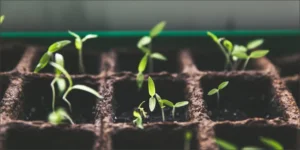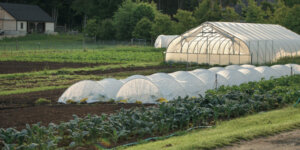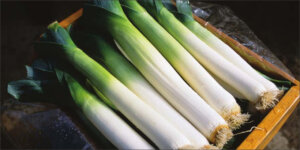Hemp History 101
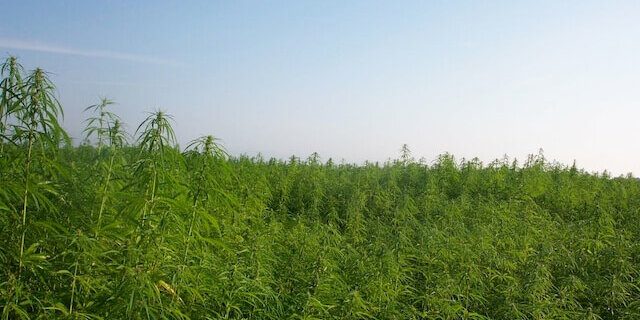
The historical prominence of hemp can be seen in dozens of American towns that still bear its name, including Hempfield, PA, Hemphill, KY, Hempstead, NY, Hempfork, VA, and more. How did humanity’s longest utilized plant, that has more than 25,000 uses and so many towns named after it, end up nearly extinct in the U.S.?
We first explored hemp’s potential in 1997 with the publication of John Roulac’s book, Hemp Horizons: The Comeback of the World’s Most Promising Plant. Roulac, Founder and CEO of Nutiva, was ahead of the curve when this book was published, and is now a leader in the lucrative superfood industry in which hemp plays a major role.
We’ve resurrected a chapter of this now out-of-print book to give readers a glimpse at hemp’s many uses throughout history (from the dawn of civilization). In looking back, we get a sense of what could be in store.
The following is an excerpt from Hemp Horizons: The Comeback of the World’s Most Promising Plant by John W. Roulac. It has been adapted for the web.
Few people today realize that the misunderstood hemp plant, Cannabis sativa L. of the family Cannabaceae, has played a vital role in world commerce for at least six thousand years. Though shifting social and economic trends have influenced the scope of its cultivation in recent centuries, hemp traditionally has been relied upon to supply humanity with a wide range of essential commodities.
The Origins of Cultivated Hemp
Asia
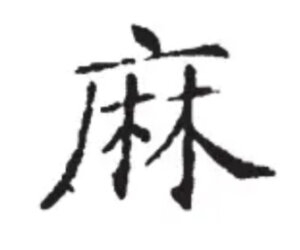
Hemp was one of the earliest crop plants of China. Through longterm efforts, the ancient Chinese domesticated hemp from a wild plant into a cultivated crop…Ancient Chinese techniques of hemp sowing, cultivation, and processing developed rapidly and became fairly advanced.
The earliest Neolithic farming communities along the Wei and Yellow rivers cultivated hemp along with millet, wheat, beans, and rice. The oldest Chinese agricultural treatise is the Xia Xiao Zheng, written circa the 16th century B.C., which names hemp as one of the main crops grown in ancient China (Yu 1987).
The article also quoted a long-ago writer, Ji Sheng:
Deep plow and fertilize the soil before sowing the seed. When spring comes, about February to March, select the dusk of a rainy day to sow seeds…Fertilize the hemp with silkworm excrement when it has grown to one chi tall, and when it has grown to three chi tall, fertilize it with silkworm and pig excrement. Water the hemp frequently, and if there is much rain, the quantity of water should be decreased.
Chinese interest in the written word let to the use of hemp for making scrolls, which eventuall brought about the development of the world’s first paper industry. The Chinese art of paper-making reached Persia and Arabia in the eighth century. The writings of Confucius and Lao Tzu were transcribed on hemp paper (which lasts longer than paper derived from wood fibers), and thus the wisdom of these sages was handed down through time. Ancient China also cultivated the hemp plant in order to weave its fiber into cloth, and used its seed for food and oil.
Hemp spread beyond China in the third century B.C. The seed stock went to Korea, from which it crossed the narrow channel to Japan’s southern island, Kyushu. A coastal Japanese cave painting depicts tall hemp plants, waves, horses, and strangely dressed people – perhaps the Korean traders who introduced the crop. The word “hemp” is expressed in written Japanese by the kanji character, signifying its Chinese origin.
As time went on, hemp successfully adapted to the Japanese climate and was well established by the third century A.D. It became the staple fiber for clothing as well as for specialized purposes, such as eel-fishing line, geta (high wooden sandals) straps, and washi (fine paper). But perhaps hemp’s most fascinating role evolved in Japanese spiritual life. In the rituals of Shinto, the indigenous religion, hemp symbolizes purity and fertility; the ancient shrine at Taimdo (literally, “hemp shrine”) near Osaka is dedicated to this plant.
In Shinto and Buddhist temples, certain symbolic objects – bell ropes, purification wands and curtains (noren), and priests’ robes – are made of hemp. Zen scholars and warriors (samurai) have expressed hemp’s inspiration in haiku (poetry), aikido (a martial art), and other traditional arts.
Trade and communication among Japan, China, and Korea faded over the next few centuries, although Japanese scholars still traveled to China to study science, medicine, and agriculture. They learned to administer hemp preparations for ailments such as constipation, asthma, skin problems, and poisonous bites, as well as for promoting general vigor and for worming animals.
Hemp’s high resale value brought economic strength and power to feudal Japanese shoguns and kept humble farmers busy at labor-intensive production. The hemp leaf became a common motif in Japanese fabric, where it still appears often in modern quilts, kimonos, and noren curtains. Apart from silk for the wealthy, hemp remained Japan’s primary clothing fiber until the seventeenth century, when cotton was introduced.
The new plant’s high yield’s (produced by heavy fertilizer use and mass-processing methods) lowered its cost and popularized this fiber among the growing urban working class. Hemp fabric became somewhat exclusive – reserved for special garments and the upper class. Despite its diminished role in clothing, hemp continued its dominance as a raw material with many practical applications, through the nineteenth century.
Rural Japanese blended hemp fiber with seaweed, broom straw, and other plants to make conical snow hats and pack-boards for transporting heavy loads over the mountainous terrain. And, as in Europe during this period, Japanese military power relied upon hempen ropes and sails for its expanding navy.
Europe
The cultivation of hemp spread from Aisa to the Mediterranean along ancient trade routes. The Greek historian Herodotus extolled hemp’s role in the manufacturing of fine textiles in his Histories:
I must mention that hemp, a plant resembling flax but much coarser and taller, grows in Scythia. It grows wild as well as under cultivation, and the Thracians [inhabitants of the modern-day Balkans] make clothes from it very like linen ones – indeed, one much have much experience in these matters to be able to distinguish between the two and anyone who has never seen a piece of cloth made from hemp will suppose it to be of linen.
Hempen rope and fabric from circa 400 B.C. have been found near Stuttgart, Germany, and hemp continued to be cultivated in Central Europe through the centuries. In A.D. 1150, Moorish SPain used hemp to found the first paper mill in the West. By the sixteenth century, the art of paper-making was firmly established in Europe.
During the Renaissance, the French writer Francois Rabelais praised hemp in The Histories of Gargantua and Pantagruel:
Without it, how could water be drawn from the well? How would scribes, copyists, secretaries, and writers do without it? Would not official documents and rent-tolls disappear? Would not the noble art of printing perish?
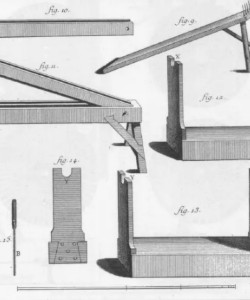
Eighteenth-century French tools for breaking hemp’s strong fibers.
The very canvas on which Renaissance artists created their masterpieces took its name from the genus Cannabis (from which the fabric was originally made), and the oil in the paint was often derived from hemp seed.
From the sixteenth to the eighteenth centuries, hemp and flax dominated among the fiber crops of Asia, Europe, and North America. French, Dutch, Spanish, British, German, and Russian trading ships – including those that brought the first explorers and colonists to America – were rigged with ropes and sails made from hemp.
The British empire was founded on naval superiority, which in turn required vast quantities of hemp fiber to keep its vessels swift and sure. No wonder then that hemp was the most important crop in Britain’s economy during the 1700s.
Villages named Hempstead, Hempton, and Hampshire, especially common in southern England, attest to hemp’s vital role. To fight a war without reliable access to high-quality hemp would have been as unthinkable as doing without pig iron for cannon shot. To assure the empire’s hemp supply, the British monarchy made its cultivation compulsory, and looked to its colonies in Australia and North America, as well as to foreign trading partners, to supplement domestic crops.
By the 1700s and the 1800s, Russia’s largest agricultural export was hemp, which supplied sails and rigging for American, Canadian, and European ships. Meanwhile, Britain’s arch-rival, France, had more than eight hundred thousand acres of hemp under cultivation. During wartime, hemp supplies were often cut off to punish enemy nations, so each country endeavored to maintain its own source of supply.
New World
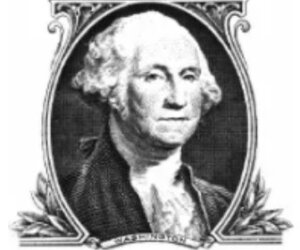
In New England, hemp was an indispensable raw material. Many of the American colonists’ Bibles and maps were printed on hemp paper, and some of their lamp oil came from pressed hemp seeds. The high value placed on hemp fostered an early recycling industry, which converted old clothing, rags, ropes, and sails into paper.
Hemp was so vital commercially that in 1640 the governor or Connecticut declared that every resident of the colony must grow the plant, to keep pace with the burgeoning need for marine cordage. In 1671, to stimulate hemp production and reduce imports, the Colony of Maryland offered local growers one pound of tobacco for every pound of hemp raised domestically. In 1700, Massachusetts required manufacturers of cordage to use fiber produced within the colony and neighboring colonies followed suit.
America’s founding fathers were strong supporters of hemp; in fact, both George Washington and Thomas Jefferson were long-time hemp farmers. The first two drafts of the Declaration of Independence were written on hemp paper.
Colonial women sewed hemp linens for the Continental Army without which more soldiers might have frozen to death at Valley Forge. At the time of the Revolutionary War, the United States Navy’s mightiest battleship, the U.S.S. Constitution, carried sixty tons of hempen rope and sails, including an anchor line that was two feet in diameter.
As surely as the twentieth century could be called the Age of Petroleum, the eighteenth century was the Age of Hemp.
Hemp: A Temporary Decline
In the first half of the nineteenth century, hemp maintained prominence in American industry. In the mid-1800s, more than 160 factories in Kentucky manufactured hemp bagging, bale rope, and cordage, employing several thousand workers. In regions where hemp was prominent, dozens of American towns still bear its name, including Hempfield, Pennsylvania; Hemphill, Kentucky; Hemp Island, Florida; Hemphill Bend, Alabama; Hempstead, New York; Hemp, Georgia; Hempton Lake, Wisconsin; Hempfield Lake, Mississippi; and Hempfork, Virginia.
By the end of the nineteenth century, however, hemp’s vital role in commerce was in global decline. The advent of the steam and petroleum engines had severely reduced demand for hempen rope and sails, while the invention of the cotton gin had greatly cut labor costs in the cotton industry.
The lack of a mechanized method for hemp harvesting and processing severely limited hemp’s economic competitiveness. Much of the remaining demand for hemp cordage in Canada and the United States was supplied by Russian imports, which were cheaper because of the low wages paid to Russian serfs. Inferior-quality baling twine began to be manufactured from jute, sisal, and Manila hemp, which actually is not hemp at all.
The 1892 World’s Fair, help in Chicago, featured hundreds of architectural columns made of artificial marble (plaster of Paris combined with hemp). But by the early 1900s, hemp was in general use only for cordage and for specialty seed and oil (the seed was used in bird feed, and the oil was an ingredient in pains and varnishes).
Nevertheless, there was still a flicker of interest in the possibility of expanded applications for hemp, particularly as a raw material for paper. The 1904 edition of Canada’s Pulp and Paper magazine published several studies, including “Hemp Waste for Paper”, that reported favorably on these prospects. A 1910 United States Department of Agriculture (USDA) article, “Utilization fo Crop Plants in Paper Making”, stated:
Evidence has been gathered that certain crops can probably be grown at a profit to both the grower and the manufacturer solely for paper-making purposes. One of the most promising of these is hemp.
With the outbreak of World War I in 1914 and the resulting drop in hemp imports from Russia and Italy, hemp acreage increased within the United States as American manufacturers looked to domestic sources for fiber. The 1917 Yearbook of the United Stated Department of Agriculture reported “The total acreage [of hemp] of the entire country doubled annually, reaching an estimated height of forty-two thousand acres in 1917.”
Andrew Wright, agronomist with the University of Wisconsin Agricultural Experiment Station and a leading hemp researcher, wrote in the August 1918 Country Gentleman:
From a position of insignificance, hemp has become within the past few years a crop of national importance – second only to cotton as the greatest fiber crop of the United States…Thread for army shoes, twine for the grain harvest, caulking for our ships – surely hemp should be reckoned among our foremost war crops.
A Technological Breakthrough
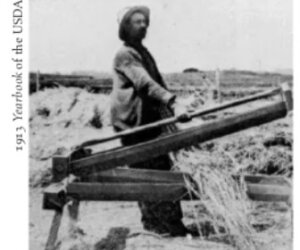
A hemp hand brake
After World War I, fiber importation resumed and the demand for domestic hemp production subsided. But the war had occasioned a variety of experiments concerning the separation of hemp fibers. At the time, only about 15 percent of the hemp stalk – the part containing the longest fibers – was usable. (Since then, selective breeding has increased the long bast portion of the stalk to abut 30 percent.) The remaining shorter core fibers, or hurds, were burned in the fields as waste.
In 1916, a major breakthrough for the hemp industry was heralded by the publication of USDA Bulletin Np. 101: Hemp Hurds as Paper Making Material. The bulletin, which was printed on hemp-hurd paper, announced a prototype decorticating (fiber-separating) machine that would greatly reduce hemp’s labor costs, improve paper quality, and conserve forests by providing a low-cost, abundant source of pulp to fill the world’s growing need for paper. It further stated:
Every tract of ten thousand acres devoted to hemp raising year by year is equivalent to a sustained pulp-producing capacity of forty thousand acres of average pulp-wood [timber] lands.
In other words, in order to secure additional raw materials for the production of twenty-five tons of fiber per day, there exists the possibility of utilizing the agricultural waste [ the core fiber previously burned in the field] already produced on ten thousand acres of hemp lands instead of securing, holding, reforesting, and protecting forty thousand acres of pulp-wood lands…After several trials,…paper was produced that…would be classified as Number One machine-finishing paper.
Hemp had now received U.S. government sanction as a viable and important cash crop, one that could replace forest products as a source as paper pulp. It remained only for someone to manufacture and distribute the much-needed fiber-separating machinery.
Hundreds on inventors had tried to come up with an efficient process for capturing all of the hemp plant’s useful fiber. In 1917, inventor George W. Schlichten presented his decorticating machine, which economically separated hemp fiber from the core, and for which he was issued a patent.
This new technology reduced labor costs dramatically, and created the possibility of the American hemp industry assuming a stronger economic position than ever before: The stalk was now up to 95 percent usable, a threefold improvement over previous yields. Yet the paper trail of Schlichten’s invention mysteriously disappears in the mid-1920s. During the following decade, several companies build factories that use innovative fiber-separating equipment. Was their technology based on Schlichten’s invention? We may never know.
Recommended Reads
Recent Articles
Searching for the perfect book to give the homesteader in your life? We’ve got your go-to books for anyone interested in organic growing, permaculture, soil health, year-round growing & more! What’s their next great read?
Read MoreWinter is coming… but that doesn’t mean you should put away those tools just yet. Extend the growing season well past the first frost!
Read MoreThe following excerpt is from Grow a New Garden: Plan, design and transform any outdoor space by Becky Searle. It has been adapted for the web. If you’re not a gardener yet, and you have never unashamedly added horse manure to your Christmas list, you might be tempted to skip this chapter. But even if…
Read MoreLiving in a colder climate doesn’t mean you need to give up on more fragile plants. By preparing plants for the winter, you’ll set them up to survive and thrive.
Read MoreGrow leeks all year round with tips from gardening expert Eliot Coleman. Get ready for a bountiful harvest and grow leeks all year round!!
Read More




